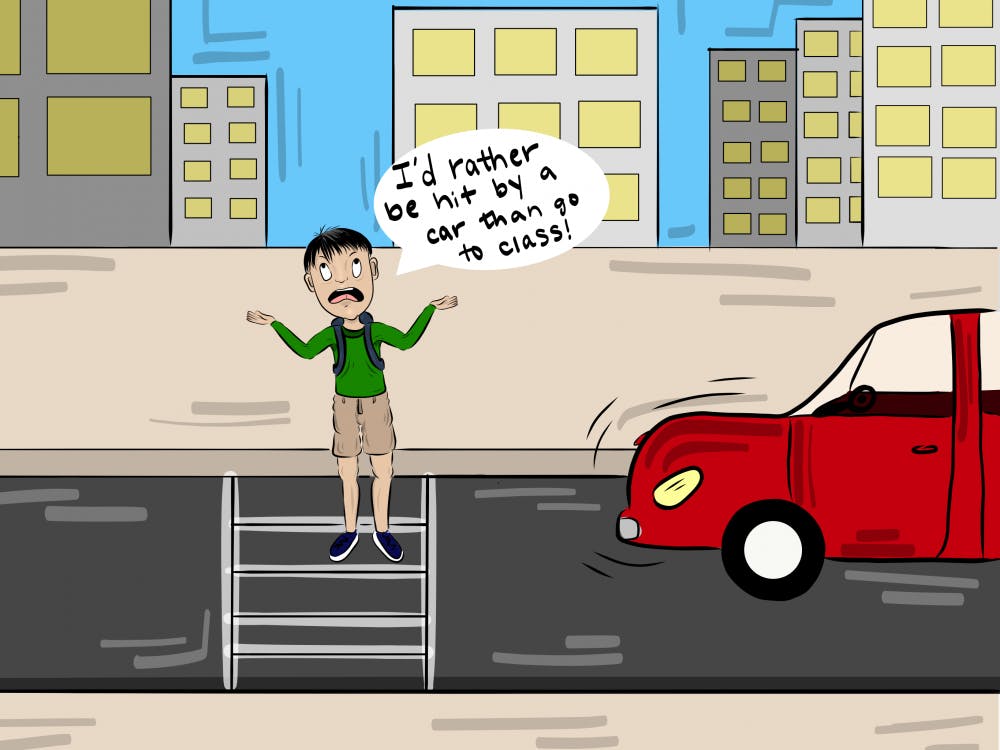Language is powerful.
It's not uncommon to hear comments on ASU's campus like "I wish this car could hit me so I wouldn't have to take this test" or "I'm so stressed I'm ready to die." These types of comments undermine real mental health issues.
This is due in part to the ever-changing nature of language. And now, it evolves faster than ever before.
Shifts in language often occur in response to social, economic, and political pressures. In most cases, these shifts are great. They indicate new ideas and philosophies that impact day-to-day communication.
However, not all shifts are positive. Language shifts pertaining to mental health can have toxic implications, especially for those suffering with mental illnesses, making their situation seem insignificant.
The terminology used to differentiate between a real disorder and a feeling is becoming more difficult to determine. For example, anxiety to one person may mean something totally different to someone with Generalized Anxiety Disorder.
It’s not uncommon to hear mental disorder terminology describing common, often trivial situations or problems from students, especially those in college. It seems harmless at first, however, its underlying meaning deeply stigmatizes those who struggle with mental illness.
These seemingly innocent phrases undermine the problems of students who suffer from mental illness to the point where their everyday struggle is perceived as a joke.
Sure, time and time again, we all experience some form of stress, sadness, or anxiety, but those temporary feelings do not equate to experiencing a debilitating mental illness daily.
Among the thousands of susceptible groups of people in the world, college students are arguably most at risk for serious issues of depression, anxiety, suicide, eating disorders and addiction.
At ASU, 9.1 percent of students reported seriously considering attempting suicide and 35.4 percent reported feeling so depressed that it was difficult to function during certain times.
It is important to realize that, as college students, we are constantly under stress to do well in school, maintain a bustling social life, and keep a steady sleeping schedule — however, that does not mean we can manipulate mental disorder terminology to describe a trivial situation we may be going through.
Erin Lanphier Ph.D from ASU's psychology department believes that college students are especially susceptible to developing mental health conditions.
“The transition from high school to college is difficult and sometimes it can push students to their breaking point,” Lanphier said.
Of course, students who say things like “I’m so OCD about how I organize my notes” or “I have 5 tests tomorrow I want to die!” only do so as a joke, but that’s precisely the point. It’s like we’ve all unconsciously made the decision to use mental health issues as punchlines to our jokes.
Jokes and memes depicting the effects of anxiety and depression, and in some cases, even suicide, crept their way into twitter feeds and Facebook home pages.
As discussions about mental health became less taboo in present day society, social media platforms became inundated with discussion surrounding mental health, painting them with a sense of humor or quirkiness rather than a serious mental condition.
However, the insights taught to us by mental health memes show us the innate potential of social media platforms to influence our perception of mental health issues.
When you're closing apps and you accidentally close the music app pic.twitter.com/MLYOqkZmGA
— Common White Girl (@CommonWhiteGirI) February 12, 2017
— no (@umsassy) February 20, 2017
Changing our language is one step we can take towards changing attitudes about mental health.
We need to stop using mental health issues, especially suicide, to represent negativity or minuscule problems we encounter.
If you have used some of these phrases in the past, that doesn’t make you a bad person. We are a product of our environment and it’s no fault of your own that this internalized language has become widely accepted and used regularly. The beautiful thing about language is we have the power to choose how we use it.
We can stop trivializing these very serious disorders and create a safer, more constructive place for those who are struggling.
Instead of using these phrases to dramatize our everyday lives, we can use them in meaningful conversation to the benefit of others and take the steps toward removing the stigma.
Reach the columnist at yasmine.mian@asu.edu or follow @yasminemian on Twitter.
Editor’s note: The opinions presented in this column are the author’s and do not imply any endorsement from The State Press or its editors.
Want to join the conversation? Send an email to opiniondesk.statepress@gmail.com. Keep letters under 300 words and be sure to include your university affiliation. Anonymity will not be granted.
Like The State Press on Facebook and follow @statepress on Twitter.




